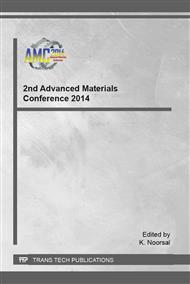p.357
p.361
p.366
p.371
p.376
p.381
p.386
p.391
p.399
Degradation Assessment of Gas Turbine Hot Gas Path Components
Abstract:
Hot gas path component consists of components designed to burn air-fuel mixture in combustion section and provide hot gasses to the turbine section where mechanical power is produced. The aim of this research project is expected to improve the current practices of managing degradation of hot gas path components. Understanding the damage mechanisms is of great interest in reducing the damage and failure risk. In this research, a study was conducted on F-Class type gas turbine hot gas path components assembly. It involved extensive examination and testing of the components which had been in operations for 24,000 hours since the last shutdown. Various factors such as installation, operating conditions, hardness and material of constructions were also investigated. This paper reports the initial findings of the study of hot gas path components degradation. It describes the damage observed on the affected areas of the components and proposes the factors that contribute to the damage processes. Potential solutions for mitigating the damages are also discussed.
Info:
Periodical:
Pages:
376-380
Citation:
Online since:
January 2016
Authors:
Keywords:
Price:
Сopyright:
© 2016 Trans Tech Publications Ltd. All Rights Reserved
Share:
Citation:


